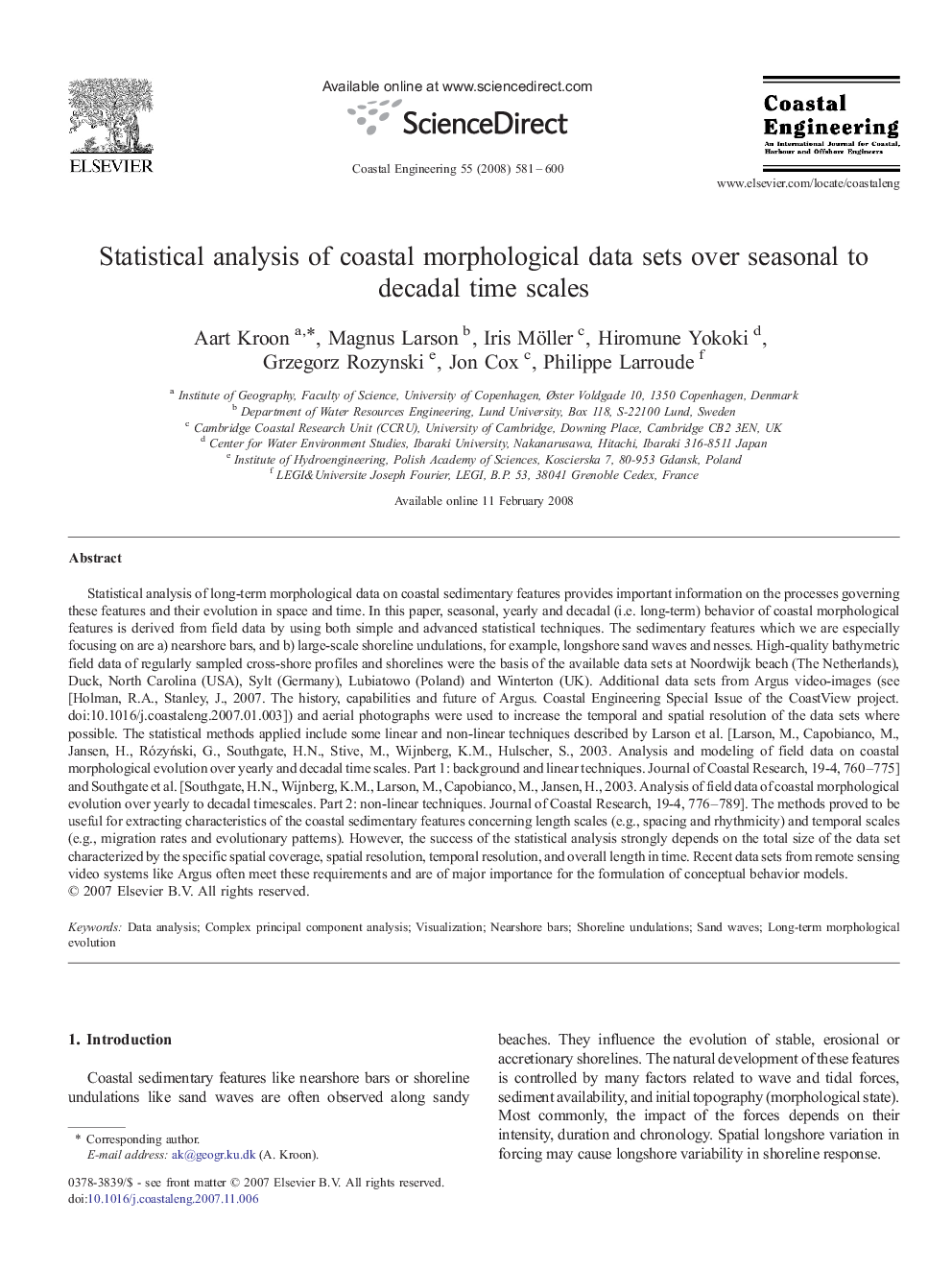| Article ID | Journal | Published Year | Pages | File Type |
|---|---|---|---|---|
| 1721497 | Coastal Engineering | 2008 | 20 Pages |
Abstract
Statistical analysis of long-term morphological data on coastal sedimentary features provides important information on the processes governing these features and their evolution in space and time. In this paper, seasonal, yearly and decadal (i.e. long-term) behavior of coastal morphological features is derived from field data by using both simple and advanced statistical techniques. The sedimentary features which we are especially focusing on are a) nearshore bars, and b) large-scale shoreline undulations, for example, longshore sand waves and nesses. High-quality bathymetric field data of regularly sampled cross-shore profiles and shorelines were the basis of the available data sets at Noordwijk beach (The Netherlands), Duck, North Carolina (USA), Sylt (Germany), Lubiatowo (Poland) and Winterton (UK). Additional data sets from Argus video-images (see [Holman, R.A., Stanley, J., 2007. The history, capabilities and future of Argus. Coastal Engineering Special Issue of the CoastView project. doi:10.1016/j.coastaleng.2007.01.003]) and aerial photographs were used to increase the temporal and spatial resolution of the data sets where possible. The statistical methods applied include some linear and non-linear techniques described by Larson et al. [Larson, M., Capobianco, M., Jansen, H., RózyÅski, G., Southgate, H.N., Stive, M., Wijnberg, K.M., Hulscher, S., 2003. Analysis and modeling of field data on coastal morphological evolution over yearly and decadal time scales. Part 1: background and linear techniques. Journal of Coastal Research, 19-4, 760-775] and Southgate et al. [Southgate, H.N., Wijnberg, K.M., Larson, M., Capobianco, M., Jansen, H., 2003. Analysis of field data of coastal morphological evolution over yearly to decadal timescales. Part 2: non-linear techniques. Journal of Coastal Research, 19-4, 776-789]. The methods proved to be useful for extracting characteristics of the coastal sedimentary features concerning length scales (e.g., spacing and rhythmicity) and temporal scales (e.g., migration rates and evolutionary patterns). However, the success of the statistical analysis strongly depends on the total size of the data set characterized by the specific spatial coverage, spatial resolution, temporal resolution, and overall length in time. Recent data sets from remote sensing video systems like Argus often meet these requirements and are of major importance for the formulation of conceptual behavior models.
Keywords
Related Topics
Physical Sciences and Engineering
Engineering
Ocean Engineering
Authors
Aart Kroon, Magnus Larson, Iris Möller, Hiromune Yokoki, Grzegorz Rozynski, Jon Cox, Philippe Larroude,
